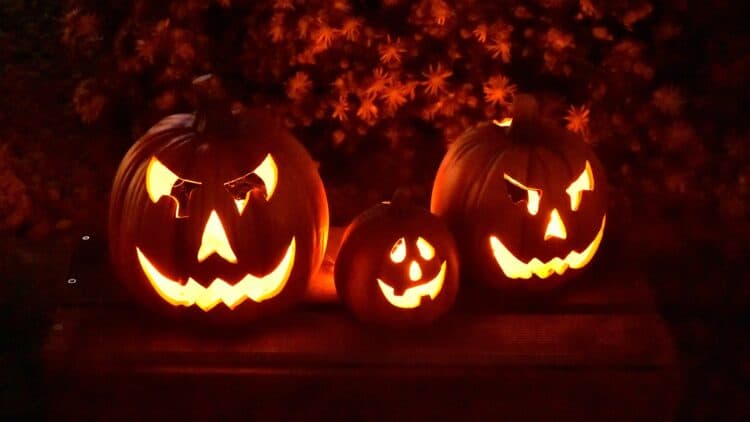As we approach Halloween, you might notice blue pumpkins outside homes.
We explain why this is and what it means.
Blue Pumpkin
Halloween, as we know it today, has evolved over centuries and is a mixture of various cultural and historical traditions.
Its origins can be traced back to ancient Celtic and Roman festivals, with influences from Christian customs.
Pumpkins have been a regular feature of Halloween for many years.
However, Blue pumpkins have appeared recently.
Blue pumpkins are used by families to signal that their child is on the autism spectrum, and therefore may cope differently to trick-or-treating exchanges, due to their condition.
A post went viral on Meta explaining the “history behind the blue pumpkin.”
The post read: “Lots of children with autism are non-verbal, if a child knocks on your door and is holding a blue pumpkin know that many won’t say ‘trick or treat’ or won’t speak at all.
“Don’t take this as them being weird or rude, they deserve to enjoy Halloween like everyone else.”
History of Halloween
Here’s a brief history of Halloween:
Ancient Celtic Festival: The ancient Celts, who lived in what is now Ireland, the United Kingdom, and northern France, celebrated a festival known as Samhain (pronounced “sow-in”). This festival marked the end of the harvest season and the beginning of winter, a time often associated with death. It was believed that on the night of October 31, the boundary between the living and the dead was blurred, and the spirits of the dead could return to the earthly realm.
Roman Influence: The Romans conquered Celtic territories and their own traditions merged with those of the Celts. The Roman festival Feralia, which honored the dead, was celebrated in late October. The Roman festival of Pomona, which celebrated the goddess of fruit and trees, may have contributed to the apple-bobbing tradition associated with Halloween.
Christian Influence: In the 7th century, the Christian Church attempted to replace the Celtic festival of Samhain with a Christian holiday. Pope Gregory III moved All Saints’ Day (a day to honor saints and martyrs) from May 13 to November 1, which coincided with the Celtic Samhain. The night before All Saints’ Day became known as All Hallows’ Eve, which eventually became Halloween.
Medieval and Early Modern Traditions: In the Middle Ages, various customs and superstitions developed around Halloween. People would dress in costumes, go “souling” (visiting houses to receive food in exchange for prayers for the dead), and carve turnips into lanterns with frightening faces to ward off evil spirits. The Irish brought the tradition of carving lanterns to America, where it evolved into the pumpkin-carving tradition we see today.
Irish and Scottish Immigration: In the 19th century, Irish and Scottish immigrants brought their Halloween traditions to the United States, including the concept of trick-or-treating. Over time, these customs mixed with Native American and other immigrant traditions.
Commercialisation and Modern Halloween: By the early 20th century, Halloween had become a secular, community-centered holiday. It was popularized through various forms of media, and the emphasis shifted to costumes, parties, and children going door-to-door for candy. Halloween gradually became more commercialised, and it is now a major holiday in the United States and many other countries.
Today, Halloween is celebrated with a wide range of customs, including costume parties, haunted houses, trick-or-treating, and the display of decorations. It remains a time for people to indulge in superstitions, embrace the spooky, and enjoy the fun and festivities associated with this unique holiday.
Related: Halloween Spider earring is REALLY spooking people out







